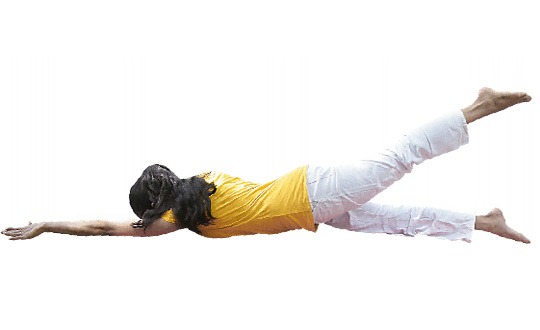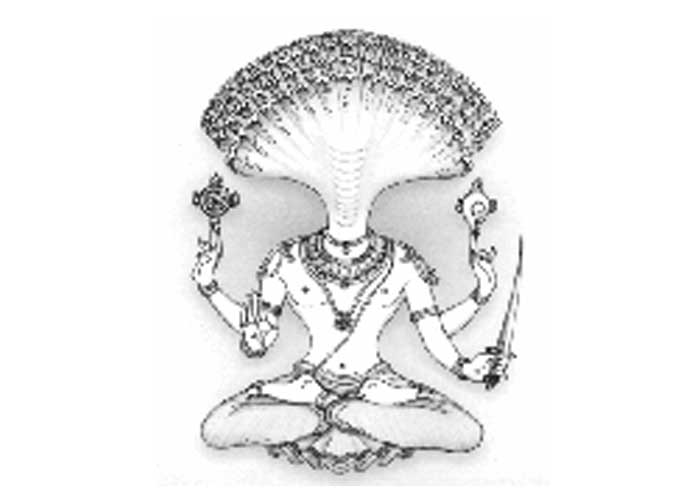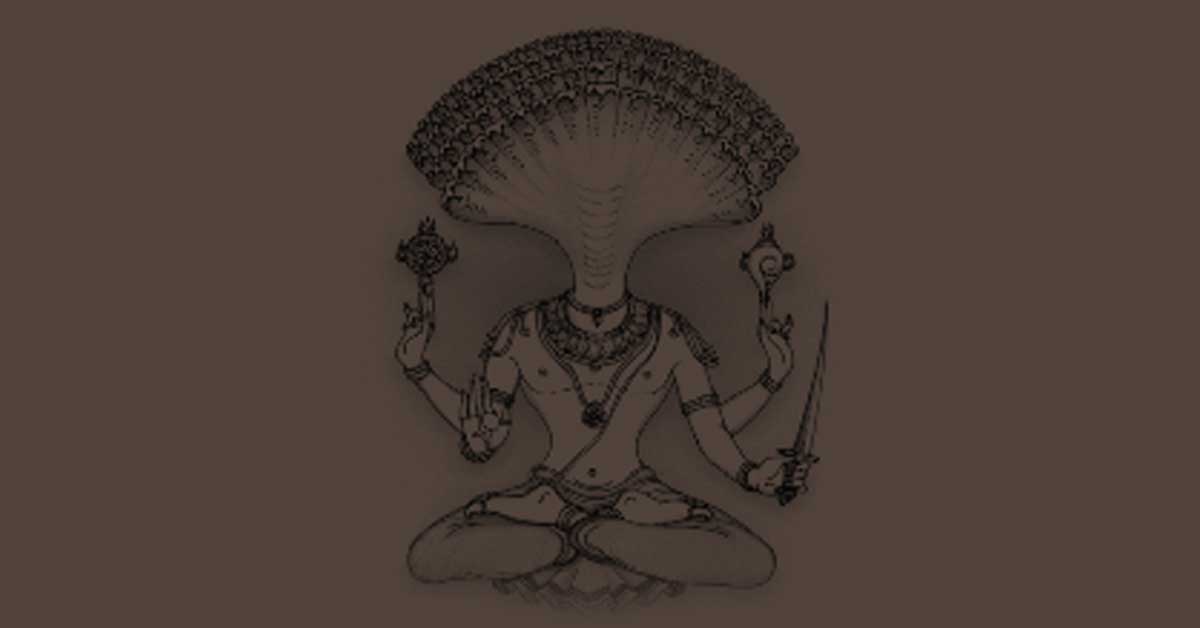A prerequisite for yoga is a strong spine. Spine, often called the second brain, holds the entire physical structure and controls reflexes in the body. Last Issue, we had started with the series on spine strengthening asanas, introducing the reader to sarpasana, advasana and jyeshtika. Let us move into four more asanas which complete the routine for a straight, strong and supple spine.
Lie flat on the stomach, legs straight, heels together and in sleeping position, forehead and chin resting on the floor. This is the preparatory position, from which you move into each of the seven asanas. Each asana is to be repeated seven times, before moving to the next. The eyes remain shut and internal awareness is maintained.
Makarasana
Cup your chin with your palms, resting your elbows on the ground. When the elbows are stretched out and arms flat on the ground, tension is felt in the neck. If the elbows are drawn too close to the chest, tension is felt in lower back. Keep the elbows at a comfortable distance such that the two points are equally balanced and the whole spine is relaxed. Hold this posture for a count of seven, maintaining natural rhythmic breath.
Ardha Shalabhasana
Stretch the right arm forward, over the head and the left arm along the thigh, both the palms lying flat on the ground. Take a deep breath and then raise your left leg straight off the ground. Forehead and arms remain fixed to the ground. Hold for seven counts. Exhaling, gently release and bring the leg down. Repeat the same with the opposite leg and hands.
Yaanasana
Place the arms straight above the head, palms resting on the floor. Inhale and then raise the legs upwards and arms together without bending knees and elbows. Head is also raised, perpendicular to the ground. Hold this posture for a count of seven. Exhaling, come down gently.
Bhujangasana
Place your elbows close to the waist, the palms facing downwards next to the shoulders. Inhale. Gently raise your forehead, followed by the neck, the shoulders, and the upper and middle back such that the navel rests on the ground. Gently tilt the head backward such that the chin is pointing forward. The elbows are raised slightly off the ground and held close to the waist. Hold this posture. Exhaling, return in the reverse order, head coming down the last. People suffering from peptic ulcer, hernia, intestinal tuberculosis or hyperthyroidism must not practice this without expert guidance.
These asanas become 100 times more powerful when they are done with mantras given by a Guru.
NOTE – Asanas initially should be done under strict supervision of an expert only.
Seven Wonders of the Spine Asanas
- Encourages the vertebral column to resume its natural shape and releases compression of the spinal nerves thereby strengthening the spine.
- Eases stiffness in the back which eventually leads to freedom from backache.
- Helps relieve pain from spondylitis and cervical strain so much so that they can comfortably continue to lead their lifestyles (for instance, sitting on computer) without a headache.
- Strengthens the back post-pregnancy and helps young mothers cope with the hectic regime of their baby(s)’ upbringing.
- Helps people of all age groups cope with lower back related problems which are caused due to stress and weakness.
- Induces strength and flexibility in the back, especially among those who start early in life.
- Maintains a youthful appearance for long without investing in expensive cosmetics and artificial diets or visits to the gym.




